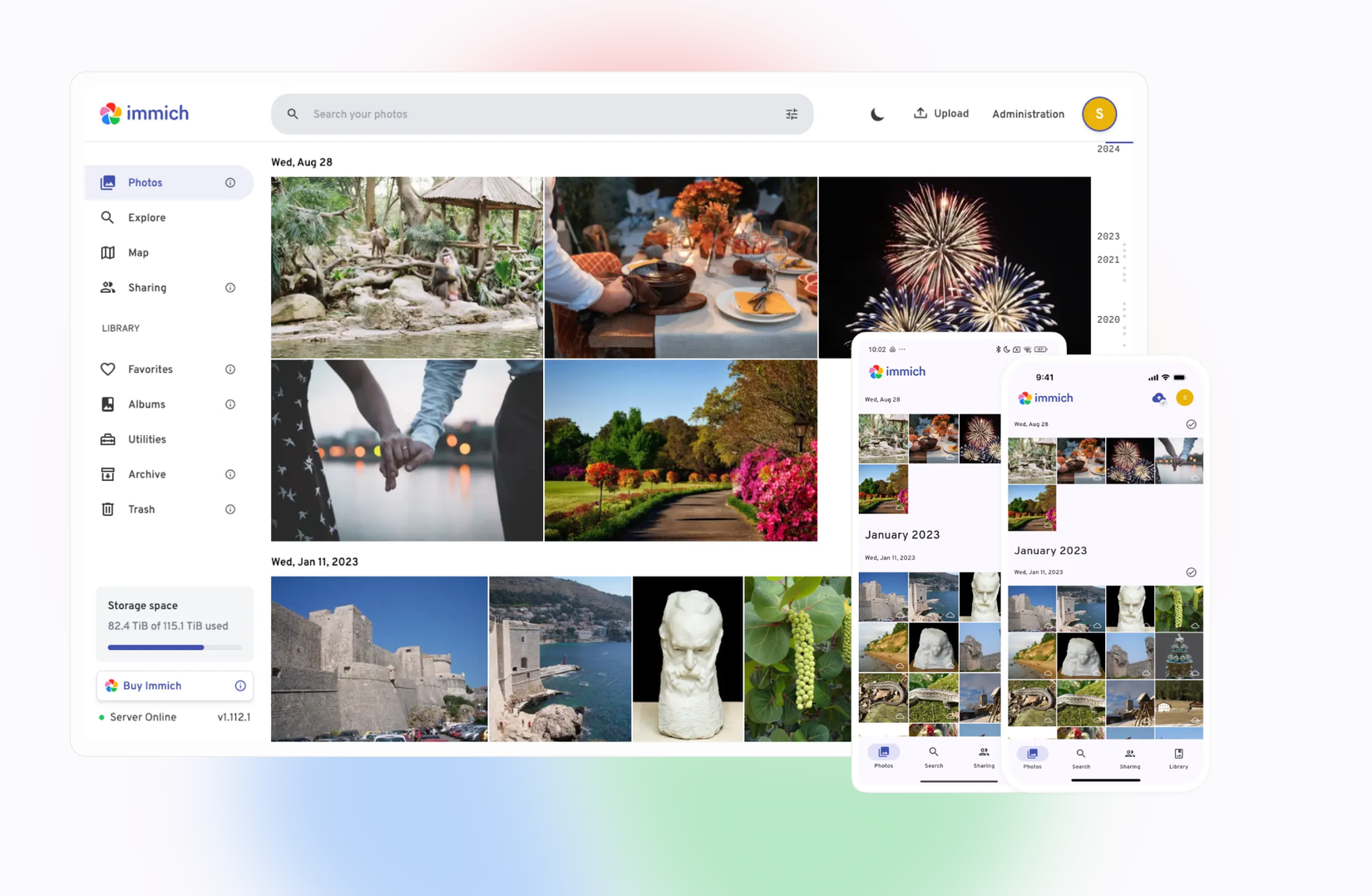Tech
3 Raspberry Pi projects to try this weekend (November 21

As we head into the weekend, it’s time for another round of fun Raspberry Pi projects to do before heading back to work on Monday. This weekend, I’m thinking it’s time to set up some robust alternative services for when the web goes down again.
From hosting your own photo backup server and removing reliance on Google or Apple, to having a backup VPN set up, and even hosting your own AI, here are three Raspberry Pi projects to try this weekend.

- USB ports
-
1 USB-C, 4 USB-A
- HDMI ports
-
2
CanaKit’s Raspberry Pi 5 Starter Kit includes everything a user needs to pick up and go, including a 128 microSD loaded with the Raspberry Pi OS.
Set up a photo server with Immich
Whether you’re tired of paying for Google Photos or iCloud storage, or you just want to have more control over your privacy, Immich is the tool for the job.
Immich is a full-stack photo server and management utility. The Immich service runs on your Pi and accesses whatever storage you give it—internal, external, or remote. You can either use it exclusively on your local network, or do what I did and open it up behind a reverse proxy to use it outside your home.
There’s an Immich app that runs on your smartphone to handle automatic backups, too. However, if you keep Immich local only, then those backups will only happen when you connect to your network at home, while a reverse proxy will let your phone back up even when you’re away.
Your Raspberry Pi will definitely be doing the heavy lifting here, so this is a tool that you’ll want to have on a newer or more powerful Pi model to get the most out of the Immich experience. Immich has the capability of using both AI and ML models locally on-device to handle classification of your images—including facial, object, and other types of recognition.
This works best on something like a Raspberry Pi 5 with the AI HAT+, though it can definitely run CPU-only if you have an older Pi.
Setting Immich up can be a bit complicated, but I used Docker to deploy it and found that the process wasn’t all that bad. So if you’re still paying for Google Photos, why not kick them to the curb and run your own photo server in-house?

- Supported Desktop Browsers
-
All
- Brand
-
Immich
Immich is a self-hosted photo server that can replace Google Photos or iCloud Photos. With on-device machine learning and AI tagging, you’ll still be able to search for “dog” and find pictures of your furry friends. Being self-hosted, all of your data remains in your home and away from prying eyes, giving you enhanced security, too.
Gain remote access to your home’s network with PiVPN
If you’re looking for a way to keep your self-hosted services still accessible when Cloudflare goes down, then PiVPN is perfect for you. While I self-host a lot of my own programs, Cloudflare is my DNS provider, so none of my domains worked during the recent outage. However, PiVPN takes care of that by providing an easy way to VPN back to your home network even when you’re away.
PiVPN will run on just about any Raspberry Pi out there. Nick Lewis here at How-To Geek uses a Pi Zero W, and says that PiVPN works great. I used to run PiVPN on a Pi 3b, and it worked well there.
Now, I run PiVPN on my Pi 4b, and the experience is definitely better. This doesn’t come from the added processing power, but instead the added network speed. The Pi 3b only has a 10/100 Ethernet jack, and the Pi Zero W is wireless only, while the Pi 4b gained a gigabit Ethernet jack for faster networking.
Regardless of which Pi you own, setting up PiVPN takes just a few minutes and is something that you should absolutely have in place as a backup means of accessing your home network when you’re away. It’s way more useful than you might think.

- Brand
-
Raspberry Pi
- CPU
-
Cortex-A72 (ARM v8)
With the Raspberry Pi 4 Model B, you can create all kinds of fun projects, and upgrade gadgets around your home. Alternatively, install a full desktop OS and use it like a regular computer.
Locally-hosted AI with Ollama
Have you ever wanted to use AI without giving all your information away? Locally hosting a large language model is the best way. You can keep all AI requests private and on your local network. Running your own models also allows you to have unlimited use of the AI without having to pay a subscription fee—there are really only upsides here.
While you can run AI on just about any system, you’ll want to make sure that your Pi is up to the task if you don’t want to wait forever for responses. Just like with Immich above, you’ll want a decently specced Pi 5 with the AI HAT+ for this task.
Once you have the hardware squared away, deploy Ollama on your Raspberry Pi. This process is fairly simple and straightforward, simply run the command curl -fsSL https://ollama.com/install.sh | sh.
This will download and install Ollama on your Pi, which gives you everything you need to get started with locally-hosted AI on your Raspberry Pi. As far as which models you should run, the choice really is yours, but you’ll want to run some of the more distilled models to have any form of a decent response time. I’d recommend deepseek-r1:1.5b, gemma2, or qwen2.5.
These models should run decently on your Pi, especially if you have a decent amount of RAM and the AI HAT+.
If you want to use your Ollama models outside the terminal, then I’d recommend Open-WebUI. I use Open-WebUI myself, and it’s a pretty straightforward system to get up and running, delivering a ChatGPT-like experience but with your own locally-hosted models.
If you haven’t tried running your own AI models locally yet, there’s never been a better time than now. There are thousands to choose from, and Raspberry Pi’s are more powerful now than ever before.
If you’re looking for other Raspberry Pi projects to try out, be sure to check out the previous weekend roundups I’ve done. From building your own custom ticket printer to customizing how your terminal looks, self-hosting your own Facebook replacement, or setting up a Time Machine server to back your Macs up, Raspberry Pis can do it all.













